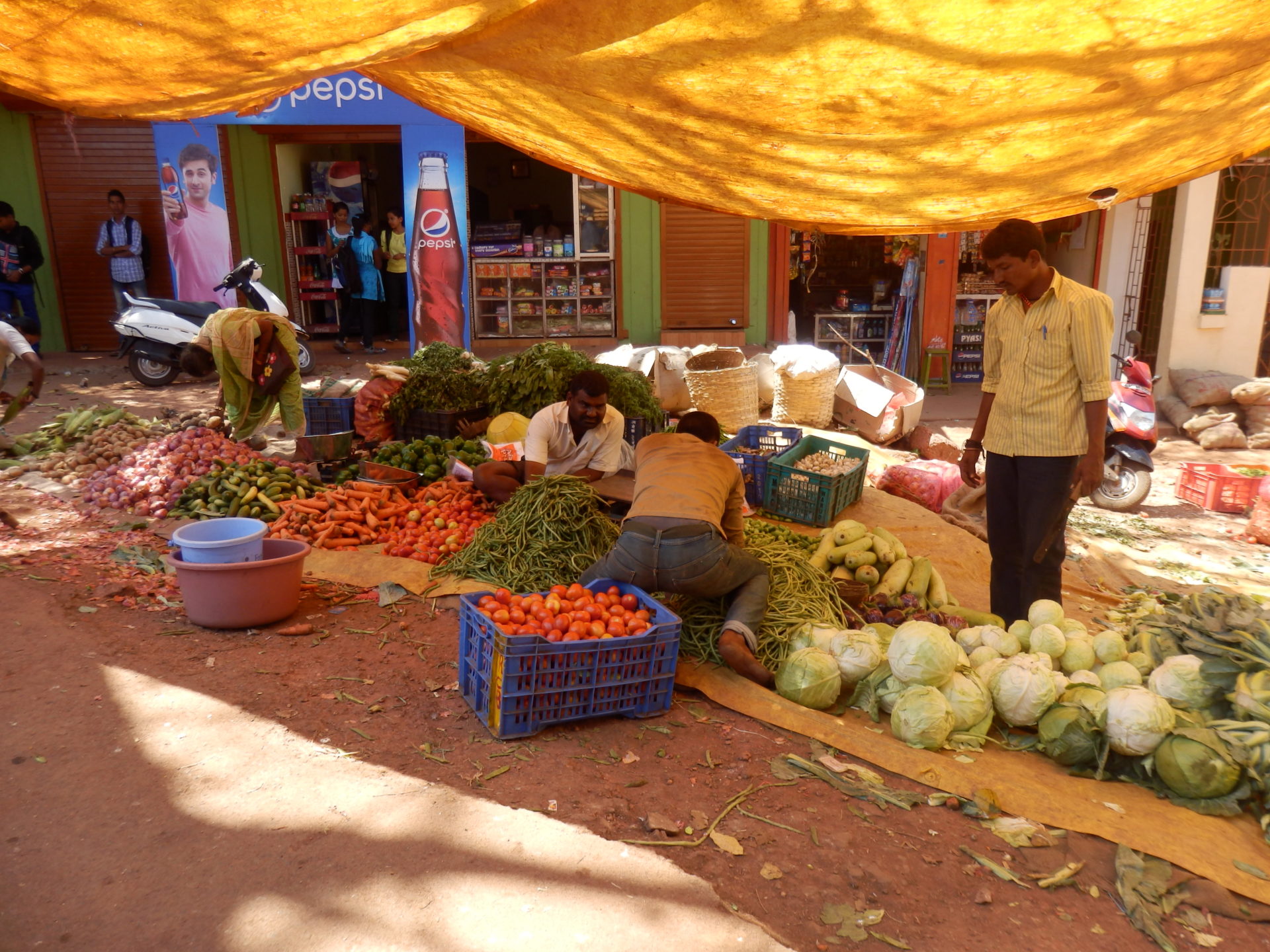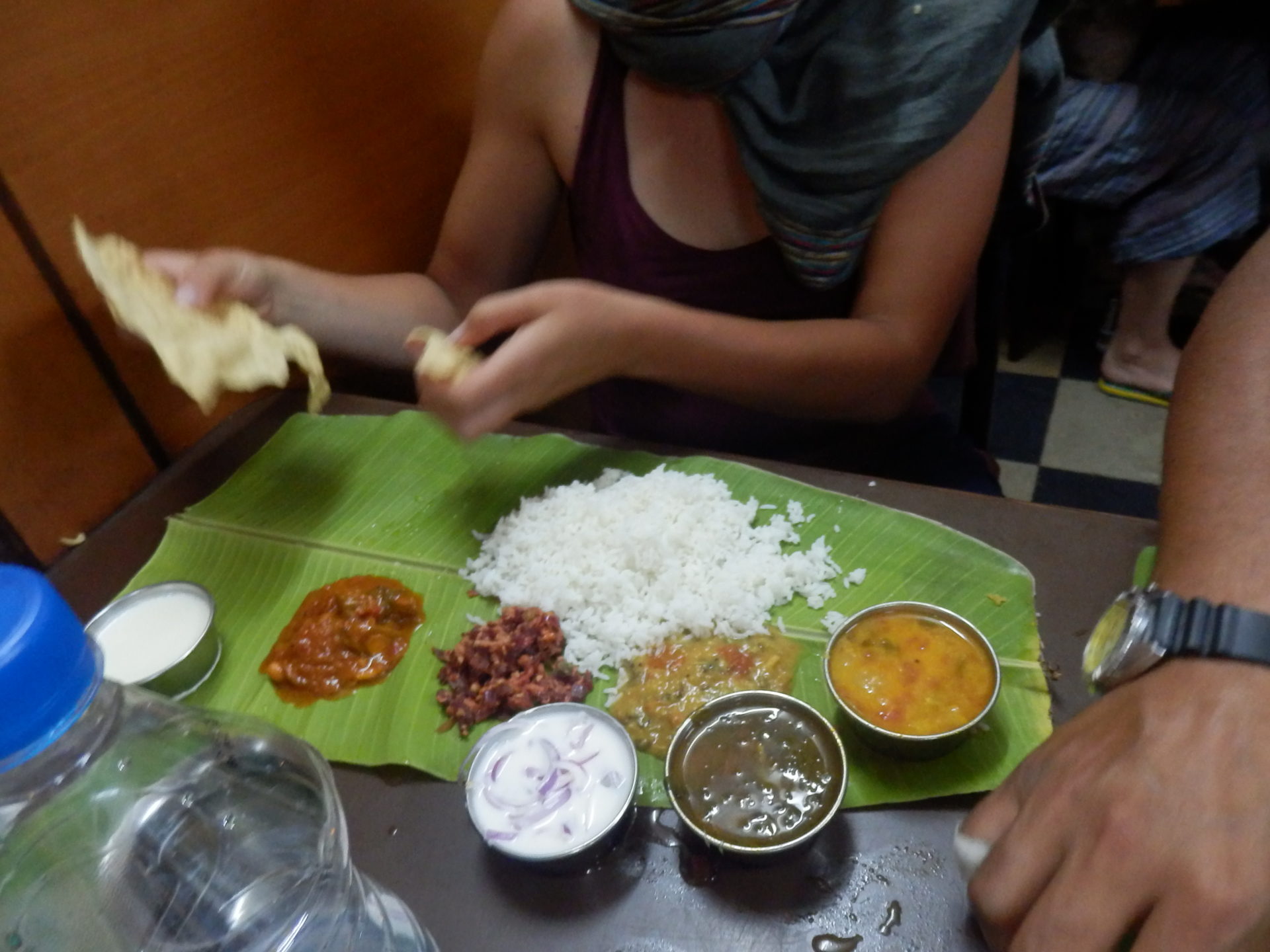What can be eaten and drunk safely in India?
Unfortunately, we cannot give a blanket answer to this question. I have lived in India for 4 years and eat almost everything and everywhere here. But I wouldn’t advise anyone to do that, especially short travellers who visit India for 2 to 3 weeks only.
If you stay in India for a long time, you have to ask yourself what you can manage or cannot manage without.
It was relatively clear to me that I did not want to give up raw fruits and vegetables. A common rule is: “Peel it, cook it or leave it!”. And I agree with that. On a two-week trip, you don’t necessarily have to eat grapes or a tomato salad. Certainly not during the first days.

Many tourists get the so-called Dellybelly (abdominal pain and diarrhea) not because they have eaten something spoiled, but simply because their system wasn’t used to the different bacterial composition of the water and the spices here.
That’s why I advise those who have just arrived to exercise caution during the first few days and not to go to the most intricate street corners to small authentic Indian street stalls, but rather to stay with gentle food such as bananas, rice and light vegetable curries.
In a country as hot as India, with many power outages, great poverty and a lack of hygiene, it is of course no wonder that food here is simply much more perishable. Milk becomes relatively quickly sour, vegetables and fruit begin to ferment and meat gets bad quite quickly.
If you get food poisoning due to bad vegetables, you usually feel sick for 2 to three days with fever, headache and nausea.
If you have eaten bad meat, the situation looks more serious. Therefore, it is better for the time in India, especially in rural areas and large metropolises, where it is very hot, to eat vegetarian food (since 80% of Indians are vegetarian anyway and vegetarian Indian cuisine is one of the most diverse and best!).
Of course, the above does not apply to the very good restaurants in the malls or big cities. Here, a great deal of emphasis is placed on hygienic regulations and there are generators that guarantee the cooling of the food. Filtered water is also used for cooking.
This also applies to many restaurants in the tourist resorts. Here the Indians are aware of the needs of Western guests. It is often advertised that the vegetables are disinfected with a hydrogen peroxide solution and vinegar and only filtered water is used for cooking.
In general, it can be said that all dishes that have been cooked are edible.
Of course, the situation is quite different with fruit juices! Ask if the juices have been stretched with water.
In India there are a variety of small, local restaurants, the so-called Dhabas. Here you will find very cheap, authentic Indian food. They can be found on every street corner. Simply furnished, without much equipment, here the focus is in filling people’s stomachs with simple food.

It is highly recommended to stop by these facilities, but you should take a quick look at the kitchen beforehand and then decide, whether to eat or not to eat.
Now to the big topic of street snacks!
Street snacks are delicious, special and different in every corner of India. Often the stalls are set up in the afternoon to help the Indians with delicious fried trifles over the evening hours. There are samosas, fried dough bags filled with potatoes, the Vadas, a South Indian specialty of fermented rice, the Tibetan momos, steamed dough bags filled with meat and vegetables and and and……

Street snacks are simply part of India and similar to a visit to the Dhabas, you should first take a close look at the stand, but also at the customers, before you get to it!
In India there is packaged water everywhere, this water is cleaned and can be drunk without any problems.
For a while it was said that one should pay attention to the lid, as bottles were simply refilled with boiled but normal water and sold. However, this is hardly the case anymore, but you can still check.
Those who feel uncomfortable consuming so many water bottles (there is no deposit system for plastic bottles in India) can fill up their bottles with filtered water in many tourist resorts.
The text contains many tips that can help to survive his journey unscathed and without a disease of the digestive system.
As I said, I eat almost everything and most of the time I’m doing well. I just don’t want to give up the many delicacies and need fresh fruit and vegetables. Every now and then, but I also have to deal with digestive problems, such as diarrhea, and about once a year I get a small food poisoning, which disappears after 3 days.
What and how to eat in India, in the end, everyone has to decide for themselves!
Check out the articles under the theme ” Food in India” for more in-depth advice.
And here an interesting article about Giardia– a common parasite, many travelers in India get through contaminated food.
Travel Tip 1 Bargaining in India





